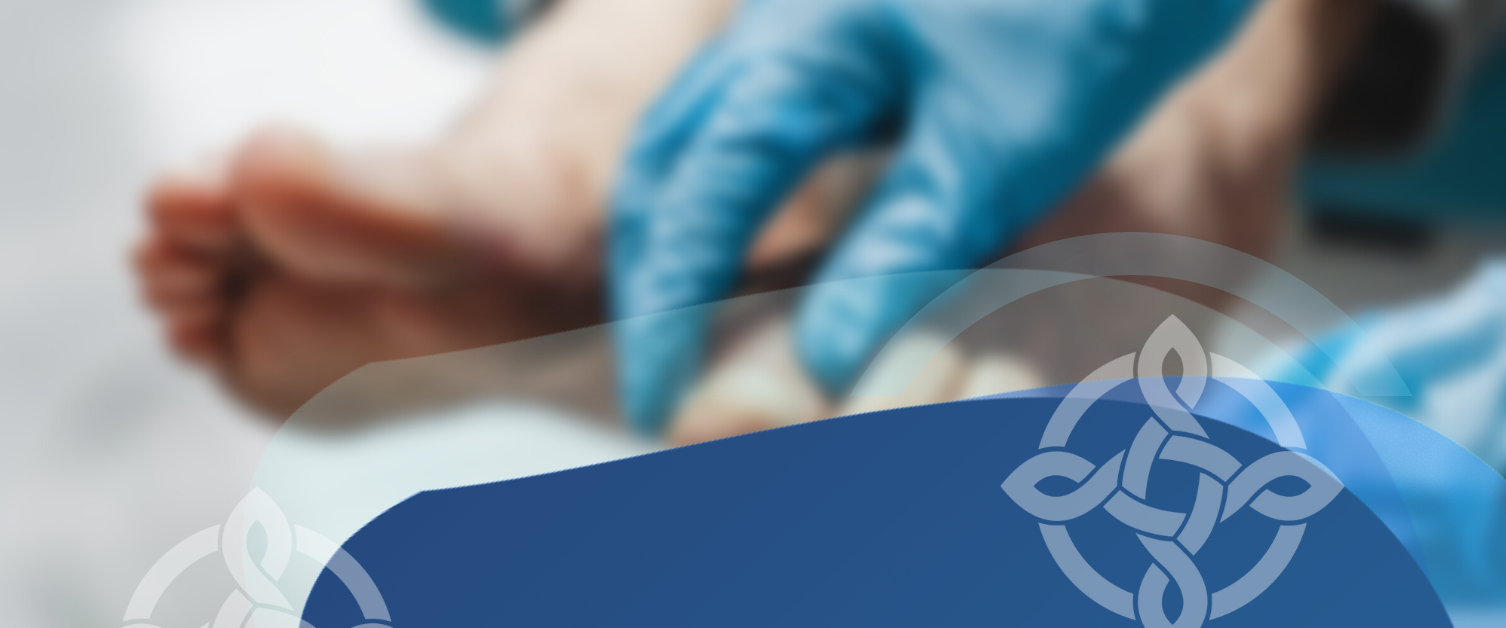Podiatry and Orthotics

Podiatry is the branch of healthcare that is concerned with the diagnosis and treatment of foot health problems. It has largely replaced the more commonly known term of chiropody.
The Podiatrist is responsible for assessing and treating a wide range of conditions and is concerned with ensuring that the most effective course of treatment is offered:
Biomechanics
Biomechanics is the study and treatment of problems that rise from the way the foot and leg work and the way people walk (gait). Foot, knee or hip pain can be associated with gait and Podiatrists will assess and treat with orthoses (insoles). The purpose of treatment is to improve or restore the normal function of the foot/ leg.
Orthoses (insoles)
Registered Podiatrists are able to prescribe a variety of orthoses (insoles). Orthoses can be produced to provide relief from pain or discomfort, or to improve foot function. Each one is prescribed and manufactured specifically for individual patients.
Diabetes
Good foot health is important for people with diabetes. It is possible that the foot's nerve and blood supply can be affected by diabetes, and the capacity of the foot to heal is reduced. The diabetic foot is also more prone to infection. Equipment and clinical examination is used to monitor foot health. Treatment is provided according to individual needs.
Managing wounds
Podiatrists diagnose and treat foot ulcers and wounds for those with vascular or neurological deficiencies (i.e. where the foot's blood supply and sensation is reduced). Podiatrists use evidence based practice and dressings and will often work in association with Community District Nurses.
Ingrowing toe nails
Ingrowing toenails are often caused by poor toe nail cutting with the result that a small spike of nail will break the skin and grow into the toe. Poorly fitting footwear will often aggravate the condition. The body responds by trying to heal the wound that is caused and as a result can produce a mass of tissue that is called hypergranulation tissue.
In this state it is easy for the toe to become infected as well as painful from the portion of nail growing in. The condition can be treated conservatively (without an operation) or surgically.
The surgical procedure is undertaken using a local anaesthetic to numb the toe. A small section of nail is then removed and a chemical (phenol) is applied to prevent that portion of the nail from growing again. The operation will last about 30 minutes and the patient can walk immediately afterwards.
The toe will heal in approximately seven weeks and the result is a slightly narrower nail plate, which is often unnoticeable. If the nail spike is noticed sufficiently early, it is possible to simply remove the spike without using anaesthetics.